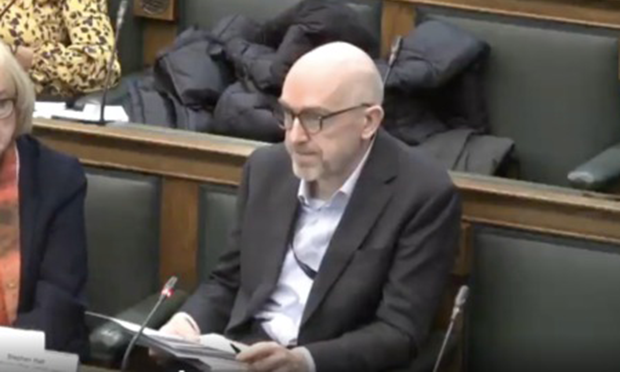‘Shocking’ data reveals Camden school absences among worst in London

Camden Learning CEO Stephen Hall. Image: Camden Council (Civico) / free for use by LDRS partners
Concerns are rife over the number of Camden pupils missing school, as a new report reveals the borough has one of the worst attendance rates in the capital.
At last night’s (24 February) children and young person’s scrutiny committee, councillors welcomed a “positive picture” for schools overall, but others voiced their angst at data showing high absence rates for both primary and secondary pupils.
Council co-optee Dr Rachel Wrangham said she was “shocked” by the figures, which rank Camden’s primary absence rate 29th out of the 32 London boroughs and secondary schools in 30th place.
The annual report from Camden Learning, the council’s education partnership, emphasised how extra resources have been poured into schools to address the problem.
This has namely been through hiring more school inclusion support officers (SISOs) to hold termly meetings with staff.
But Dr Wrangham criticised the action plan as “quite vague”.
“This rather sounds like ‘supporting the supporters to give support’, when families who I know who have children who are not attending, are desperate for support,” she said.
“It’s often not about ‘let us whip your children into school’, but about the things that are keeping children out.”
According to the data, just over a sixth (16.5 per cent) of pupils missed more than one in 10 school sessions between autumn and spring in 2023/24.
The report spells out the borough’s attendance levels are a lingering consequence of the Covid-19 pandemic.
Opposition leader Tom Simon (Lib Dem, Belsize) quizzed Camden Learning chief Stephen Hall over whether these absences were due to bullying, or children otherwise finding their schools unwelcoming.
“You can do work to address what’s going on at home – but making sure schools are an attractive, nurturing environment is another aspect,” Simon said.
Hall described tackling absence as a “constant battle”, and defended the SISOs for having successfully “built relationships” in schools.
In doing so, he said, additional support staff have also been able to identify both the barriers to attendance and the services which could help young people come back into school, including possible interventions from children’s social care.
“It’s a great source of anxieties for parents as it is for schools. There needs to be a common understanding around that,” he added.
The data presents a mixed picture overall.
While absences are comparatively high compared to the rest of London, the attendance gap between disadvantaged and non-disadvantaged pupils is narrower than they are nationally.
Although Camden’s special educational needs and disabilities (SEND) pupils are absent more frequently than others, this rate is still similar to inner London boroughs and the rest of England.
By far the most common reason for absence was illness, which was recorded for 63 per cent of classes missed. The council’s report stated that this was also “similar to the national profile”.
However, there remain disparities between different ethnic groups in the borough.
Bangladeshi pupils make up 7.5 per cent of primary school absences, followed by Black Caribbean students (6.8 per cent).
For these children, 13 per cent of missed sessions were due to unauthorised family holidays – almost double the rate of all pupils (seven per cent).
In secondary schools, the pupils with the most absences come from White British backgrounds, while Bangladeshi, Black African and Black Other groups each have worse attendance than the national benchmark.
While boys have a slightly higher (5.9 per cent) non-attendance rate than girls (5.6 per cent), the report added that this was also in line with national trends.
